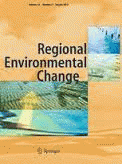This study integrated local and scientific knowledge to assess the impacts of climate change and variability on food security in West Pokot County, Kenya from 1980–2012. It characterized rainfall and temperature from 1980–2011 and the phenology of agricultural vegetation, assessed land use and land cover (LULC) changes, and surveyed local knowledge and perceptions of the relationships between climate change and variability, land use decisions, and food (in)security. The 124 respondents were aware of long-term changes in their environment, with 68% strongly believing that climate has become more variable. The majority of the respondents (88%) reported declining rainfall and rising temperatures, with respondents in the lowland areas reporting shortened growing seasons that affected food production. Meteorological data for 1980–2011 confirmed high inter-annual rainfall variability around the mean value of 973.4 mm/yr but with no notable trend. Temperature data showed an increasing trend between 1980 and 2012 with lowlands and highlands showing changes of +1.25◦C and +1.29◦C, respectively. Land use and land cover changes between 1984 and 2010 showed cropland area increased by +4176% (+33,138 ha), while grassland and forest areas declined by –49% (–96,988 ha) and –38% (–65,010 ha), respectively. These area changes illustrate human-mediated responses to the rainfall variability, such as increased stocking after good rainfall years and crop area expansion. The mean Normalized Difference Vegetation Index (NDVI) values ranged from 0.36–0.54 within a year, peaking in May and September. For weather-related planning, respondents relied on radio (64%) and traditional forecasters (26%) as predominant information sources. Supporting continuous climate change monitoring, intensified early warning systems, and disseminating relevant information to farmers could help farmers adopt appropriate adaptation strategies. © 2022 by the authors. Licensee MDPI, Basel, Switzerland.
DOI:
https://doi.org/10.3390/su14020765
Altmetric score:
Dimensions Citation Count:

Publication year
2022
Authors
Obwocha, E.B.; Ramisch, J.J.; Duguma, L.; Orero, L.
Language
English
Keywords
adaptation, climate change, food security, grasslands, land use, phenology, precipitation, food systems
Geographic
Kenya























